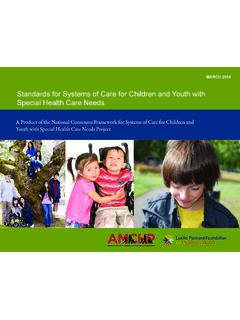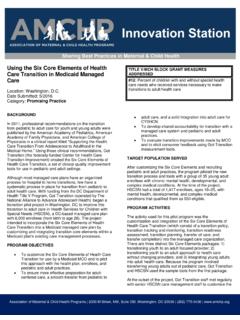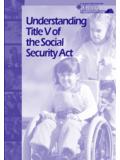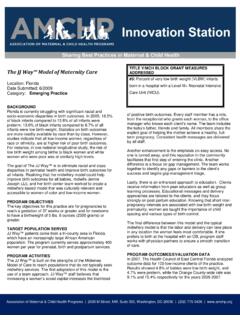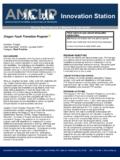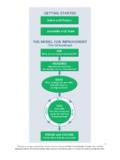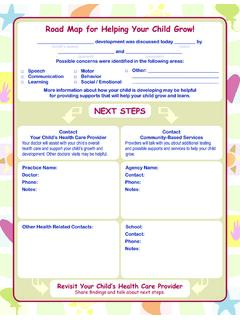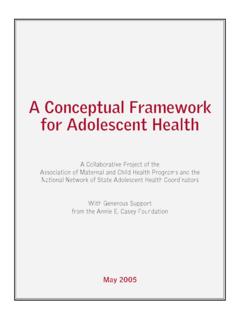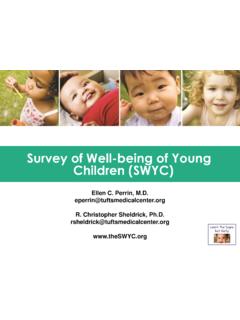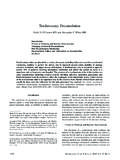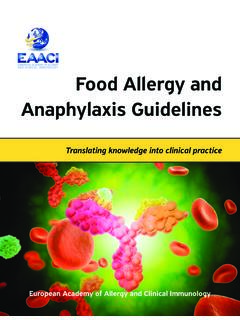Transcription of Texas Children’s Hospital Health Care Transition …
1 Association of Maternal & Child Health Programs | 2030 M Street, NW, Suite 350, Washington, DC 20036 | (202) 775-0436 | Texas Children s Hospital Health care Transition planning Tool Location: Texas Date Submitted: 9/2015 Category: Best Practice BACKGROUND Ninety percent of adolescents with special Health care needs will survive into adulthood; yet there are increased morbidity and mortality rates for young adults as they Transition into adult-based care . Adolescents/young adults with special Health care needs (AYASHCN) are not prepared for Health care Transition and there is no evidence, based on a national sample of parent of children and youth with special Health care needs, that Health care Transition planning improved between 2005 and 2010.
2 Despite universally agreeing that it is an important gap in caring for these youth, pediatric Health care providers are not prepared to assist in Transition readiness for AYASHCN and their families. Evidence-based methods to promote the successful Transition of AYASHCN are needed. Additionally, there is a need to improve this Transition to adult-based by developing Transition planning tools that providers can use to facilitate Transition planning for youth and their families. The Transition planning Tool focuses on closing the gap primarily serving Adolescents and Children/Youth with Special Health care Needs. This tool is embedded in an electronic medical record and can be used by providers from any discipline to promote improved Transition knowledge and skills on the part of adolescents with chronic illness and disability.
3 PROGRAM GOALS & OBJECTIVES The overall goal of the program is to improve Transition readiness among adolescents/young adults with special Health care needs (AYASHNC) through provider use of an electronic medical record (EMR)-based Health care Transition (HCT) Transition planning tool (TPT), and in so doing, reduce the morbidity and mortality associated with transitioning from pediatric to adult-based care . The objectives of the tool are: To build an EMR-based TPT to facilitate Health care Transition planning To employ quality improvement methods to promote provider use of the TPT To increase the number of AYASHNC who successfully Transition to (attend their first adult provider appointment) and engage in adult-based care (attend 2 appointments) To increase the number of AYASHCN who arrive at their adult appointment with a portable medical summary.
4 TARGET POPULATION SERVED AYASHCN ages 14-25 years under medical care who are planning to Transition from pediatric to adult-based Health care PROGRAM ACTIVITIES Developing, implementing and evaluating a Health care TPT, created with input from Family and Youth Advisory Boards and both pediatric and adult Health care providers that directly or indirectly addresses five of the six core Transition support indicators set forth by GOT Transition ! The TPT is an assessment and education tool designed to facilitate Health care Transition planning during a clinic visit in order to prepare AYASCHCN and their families to Transition to adult-based care . TITLE V/MCH BLOCK GRANT MEASURES ADDRESSED #10: Percent of adolescents with a preventive services visit in the last year #11: Percent of children with and without special Health care needs having a medical home #12: Percent of children with and without special Health care needs who received services necessary to make transitions to adult Health care #15.
5 Percent of children 0 through 17 years who are adequately insured Texas Children s Hospital Health care Transition planning Tool 2 | P a g e INNOVATION STATION | Sharing Best Practices in MCH Implementation included training providers to use the tool, promoting and troubleshooting its use, and expanding its use in multiple Hospital clinics as well as inpatient and community-based practice settings. EVALUATION DATA Over the past 6 years, grants from the Texas Department of State & Health Services (DSHS) (2009-2015) and Health Resources and Services Administration (HRSA) Children with Special Health care Needs (CSHCN) program (2011-2014) have funded projects to promote and evaluate TPT use in four specialty clinics (Hematology, Retrovirology, Congenital Cardiac Disease and Physical Medicine and Rehabilitation).
6 Funding permitted expanding TPT use to the remaining TCH clinical enterprise and enabled outcomes as youth transfer out of pediatric and into adult care to be evaluated. Later in this report, these four clinics are randomly referred to as Clinic A, B, C, and D for the sake of anonymity. Structure was evaluated by creating the TPT and verifying that it was available to providers throughout the TCH enterprise via the Epic EMR, and making modifications based on user feedback and patient outcomes. Process was evaluated by noting which providers attended user and individual service meetings; the number of providers who were trained to use the TPT and who actually used it; the number of patient encounters with TPT use and the number of successfully accomplished questions per patient; the number of outpatient services and community-based practices that used the TPT; provider satisfaction with TPT use; and improvements to the TPT over time.
7 Outcomes included the number of transitioning youth who met the core Transition outcome ; the number of youth who transferred out of pediatric care who attended their first adult appointment (transitioned); the number of youth who transferred out of pediatric who attended at least two adult appointments (engaged); and the number of transitioned youth who brought their portable medical summary to their adult doctor s appointment. Methods to promote TPT use and evaluate structure, process and outcomes Methods used to promote TPT use and evaluate structure, process and outcomes were described in a recently published quality improvement project and reviewed. These methods included Plan, Do, Study, Act (PDSA) cycles, incorporating weekly data reports on TPT use, weekly contact with the services using the TPT through email and support in clinic, regular meetings (every 6-12 weeks) with TPT users to obtain feedback, and interviewing youth and parents about their experiences during Transition planning and after Transition to adult care .
8 Five PDSA cycles, used to promote and evaluate the main process measure, TPT utilization, were carried out over a 35-month period: PDSA 1 (March 2012-July 2012): Baseline phase that studied passive TPT use prior to formal study commencement. PDSA 2 (August 2012-March 2013): Study providers (n=24) trained in TPT use. PDSA 3 (April 2013-November 2013): Increased frequency of study provider meetings to problem solve TPT usage barriers and increased technical assistance (there were over 10 user meetings) PDSA 4 (December 2013 April 2014): TPT was built into the EMR and made available to study providers (n=20), but promotion of its use was limited. This phase served as the baseline for TPT PDSA 5 (May 2014 December 2014): TPT training beyond existing users and services, as well as Epic Educators and care Coordinators.
9 A subset of TCH patients treated by the four subspecialty services was enrolled in a study on HCT planning and eligible for initial TPT use. These study subjects were: 16-25 years with a special Health care need, aware of his/her diagnosis, English speaking and able to understand and answer questions. The target enrollment was 30 patients per service. Study patients were recruited between February 2012 and March 2013 (PDSA cycles 1 & 2). Of the 143 patients approached as they attended a scheduled clinic appointment, 109 agreed to participate with 28 patients from Clinic A, 24 from Clinic B, 36 from Clinic C, and 21 from Clinic D. Process Utilization of the TPT was the primary process measure. The investigative team reviewed weekly Epic-generated TPT use reports across the four subspecialty clinics.
10 This yielded the number of encounters with use (which includes face-to-face clinic visits and phone encounters) among age eligible study and non-study patients and the number of providers using the TPT. Qualitative information gathered during provider feedback sessions and from open-ended questions on provider surveys assessing barriers to use and suggestions for improvement were summarized as part of planning for the next PDSA. Provider Satisfaction and Self-reported Transition planning Activities were secondary process measures assessed by a survey administered in three different phases of the project. Providers indicated their degree of satisfaction with the ease of using the TPT; the flow between titles, topics and teaching points; the TPT summary page and the time it takes to utilize the TPT in clinic.
